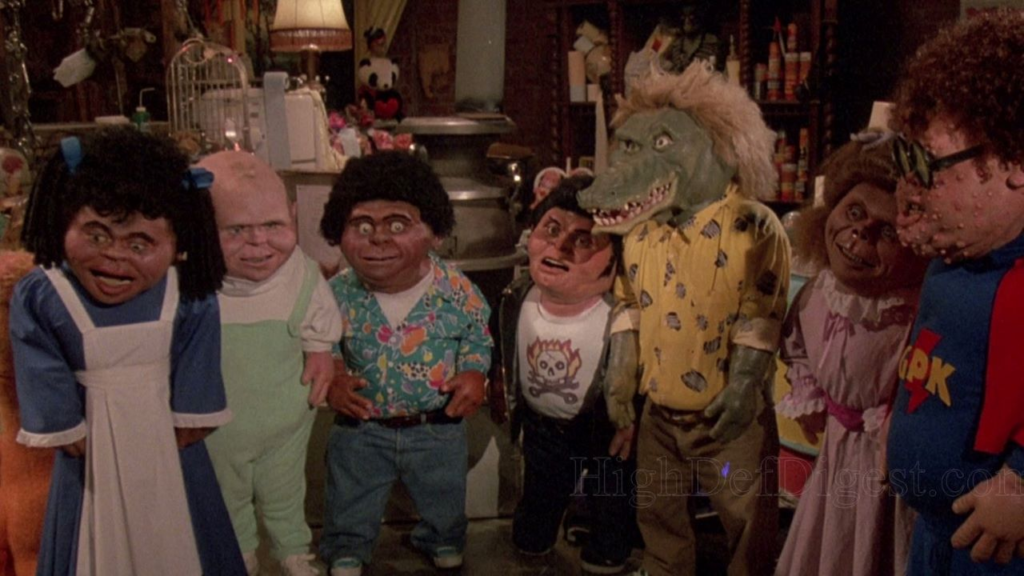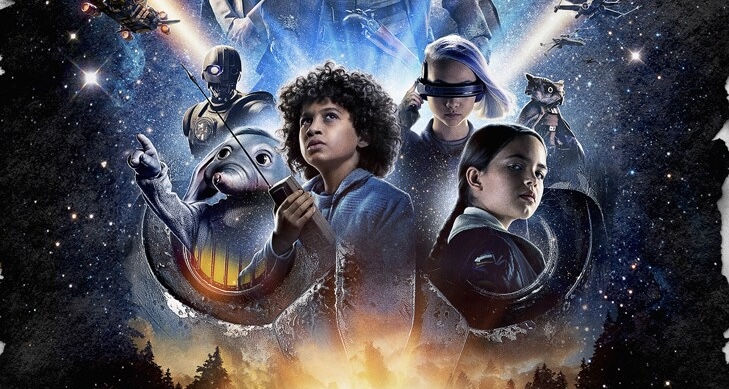In the peculiar landscape of 1980s cinema, where neon colors clashed, synthesizers hummed, and unconventional ideas found their way onto the big screen, one particular oddity stands out—the Garbage Pail Kids Movie. Released in 1987, this film, based on the wildly popular trading card series of the same name, has since become a curious artifact of its time. The question lingers: Is it a cult classic that defies conventional tastes, or does it deserve its reputation as cinematic trash? Let’s delve into the bizarre world of the Garbage Pail Kids Movie to unravel the mystery.
The Garbage Pail Kids phenomenon began as a series of trading cards created by Topps in the mid-1980s. These cards featured grotesque and humorous characters, often parodying the Cabbage Patch Kids dolls that were a cultural craze at the time. As the cards gained notoriety (and parental disapproval), the idea of a feature film emerged—an idea that would come to fruition in 1987.
The film’s narrative follows the misadventures of Dodger, a young boy working in an antique shop, who discovers a mysterious garbage can containing the Garbage Pail Kids—living, breathing, and utterly unconventional characters. From Valerie Vomit to Ali Gator, each Garbage Pail Kid possesses a unique quirk or bodily function, all exaggerated for comedic effect. As Dodger tries to navigate his challenging life, he enlists the help of these peculiar pals to confront bullies and win the heart of a girl.
The plot, while whimsical and seemingly aimed at a younger audience, quickly delves into themes of friendship, self-acceptance, and embracing one’s uniqueness. However, the film’s execution leaves much to be desired, with awkward pacing, questionable special effects, and a storyline that struggles to find its footing between children’s adventure and offbeat comedy.

One cannot discuss the Garbage Pail Kids Movie without addressing its distinctive visual style. The characters, brought to life through practical effects and costumes, exude a peculiar charm that simultaneously fascinates and repels. The prosthetics used to create the grotesque features of the Garbage Pail Kids are both impressive and cringe-worthy, contributing to the film’s overall sense of visual eccentricity.
The costuming and set design, while capturing the garish spirit of the trading cards, often come across as kitschy and over-the-top. The result is a film that feels like a living, breathing embodiment of the 1980s’ penchant for excess, a visual oddity that could only have emerged during that peculiar era.
Despite its critical panning and lackluster box office performance, the Garbage Pail Kids Movie has accrued a following over the years, earning it a certain cult status. Nostalgia plays a significant role in this phenomenon, with those who grew up during the trading card craze finding a strange comfort in revisiting this cinematic oddity.
Furthermore, the film’s unapologetic irreverence and refusal to conform to traditional children’s movie conventions contribute to its cult appeal. In a decade marked by rebellious attitudes and a desire to challenge norms, the Garbage Pail Kids Movie can be seen as a bizarre manifestation of that countercultural spirit, embracing the unconventional with a certain rebellious glee.

While some may champion the Garbage Pail Kids Movie for its peculiar charm and nostalgic value, it’s essential to acknowledge its overwhelmingly negative critical reception. The film not only failed to resonate with audiences upon its release but also faced disapproval from its own creators. Art Spiegelman, one of the original creators of the trading cards, distanced himself from the film, expressing disappointment in the adaptation’s departure from the satirical tone of the cards.
The critical consensus largely revolves around the film’s perceived lack of quality in storytelling, production values, and overall execution. The Garbage Pail Kids Movie, in the eyes of many, is a prime example of a failed attempt to capitalize on a cultural fad, resulting in a cinematic venture that missed the mark.
In the years since its release, the Garbage Pail Kids Movie has taken on a peculiar legacy. While its critical reputation remains firmly in the “trash” category, it has found a second life as a quirky artifact of 1980s pop culture. The film’s enduring appeal can be attributed, in part, to its unabashed oddity and its representation of a bygone era when unconventional ideas found their way into mainstream entertainment.
The Garbage Pail Kids Movie’s legacy extends beyond the screen, with the trading cards themselves becoming coveted collector’s items. The bizarre charm of the characters, now iconic in their own right, has led to a nostalgic resurgence, prompting discussions, retrospectives, and even screenings at cult film events.

In the end, labeling the Garbage Pail Kids Movie as either a cult classic or cinematic trash is a subjective endeavor. Its status as an oddity of the 1980s, born from a trading card craze and attempting to navigate the thin line between irreverence and entertainment, is undeniable. For those who find joy in the peculiar and appreciate the film’s quirks, it has become a cult classic—a testament to the era’s penchant for the outlandish.
Whether regarded as a treasure or dismissed as trash, the Garbage Pail Kids Movie persists as a curious anomaly of its time, a cinematic oddity that invites audiences to reflect on the peculiarities of 1980s pop culture. In the end, perhaps the enduring legacy of the Garbage Pail Kids Movie lies not in critical acclaim or box office success, but in its ability to elicit a peculiar blend of nostalgia, amusement, and bewilderment—a testament to the enduring allure of cinematic oddities.




